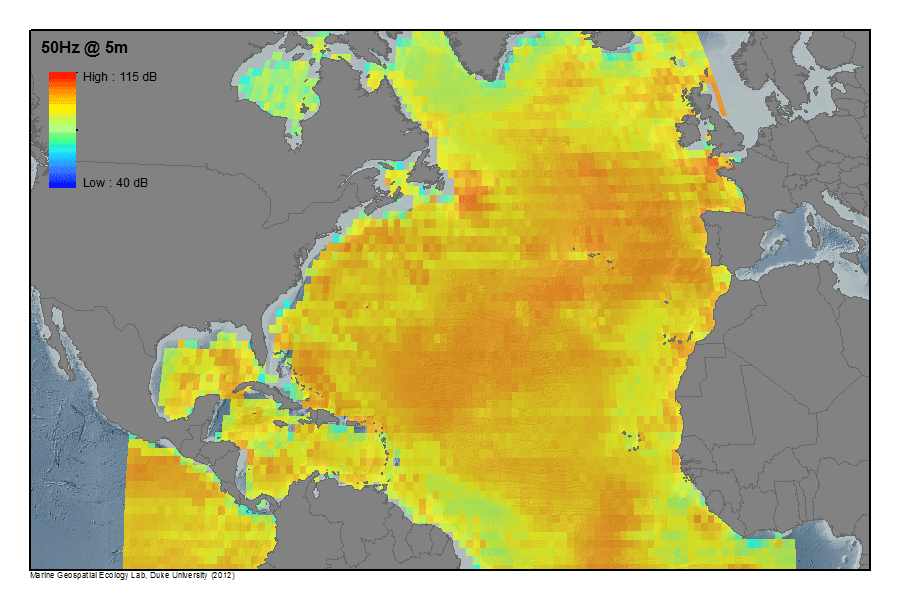NOAA maps the noise pollution we don’t hear, under the sea
The annual average ambient noise model for global shipping in the North Atlantic. This map shows the intensity of sound at 50Hz 5 meters below the surface. (Photo courtesy of NOAA and Duke University).
The National Oceanic and Atmospheric Administration is working on a project to document human-made noises in the ocean and turn them into the first large sound maps.
They hope their research will help decrease noise pollution in the ocean.
Lelia Hatch, NOAA Ocean Noise Specialist and co-chairwoman of the project, says ocean mammals, like whales, are long-lived animals like humans and have evolved over generations.
“Any change that we’re seeing in the way (whales) accommodate noise in their environment is happening within the lifetimes of the whales that are existing today,” she said.
Ocean animals may be able to adjust to the growth of noise in the ocean. But, Hatch says they aren’t able to adapt per se.
“They’ve evolved to a much quieter state where there wasn’t a lot of that human introduced noise,” she said.
Whales can hear sounds 1,000 kilometers away, Hatch says, or perhaps more. Take, for example, the device that’s used to map the sea floor and look for oil and gas deposits. A ship uses an array of air guns pulled behind a ship, with the sound directed down, to do the mapping.
The closer the whale is to that noice, the more tones and components of the sound it can hear.
But, long distances away, a whale would hear only the lower frequency components of the sound, Hatch said. And the pulsing that’s heard is the lateral loss of energy from air gun explosions. The concern, she says, is that animals close to the air gun explosions may actually be injured by the noice.
“We mitigate those effects in various different ways to try to prevent animal’s ears being exposed to those sharp and very loud sounds,” she said. “What we’re concerned about in this project is the longer range affects of the cumulative noise produced by lots of that air gun activity in areas where we’re more prolifically looking for oil and gas.”
Hatch says NOAA is also looking into how animals might orient themselves when confronted with the organic hum, noise, from a ship. A large portion of society’s goods travel by ship, at some point, which means a great deal of noise is generated.
“All of those ships and the noise produced by their propellers the cavitation bubbles coming off those propellers — that’s what you’re hearing,” she said. “That is this large-scale hum. And the questions there become: are animals able to accommodate the loss of sensory capability because their background noise conditions are now sort of chronically louder.”
